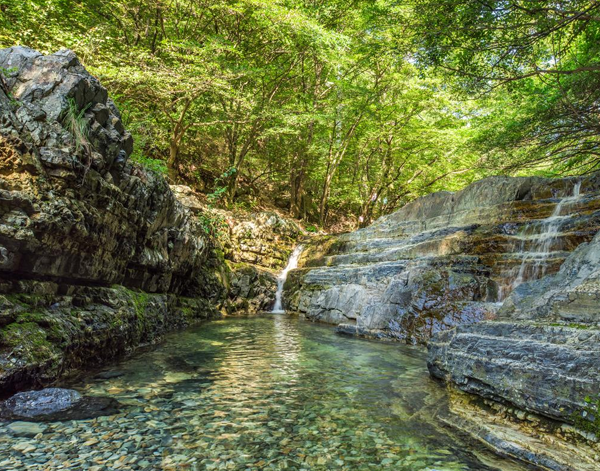
Jangyu Daecheong Valley
- Address 170-27, Daecheonggyegok-gil, Gimhae-si, Gyeongsangnam-do
- Phone 055-330-4921
- Period Open All Year Round
This 6-km-long valley which stretches in two streams at the foot of Bulmosan Mountain boasts crystal clear water, a thick lush green forest and a beautiful waterfall. It serves as a place of relaxation for the residents of Gimhae in summer. There is also a hiking trail that leads to Yongjibong Peak but cooking or camping is not allowed. You can drive straight to the waterfall.
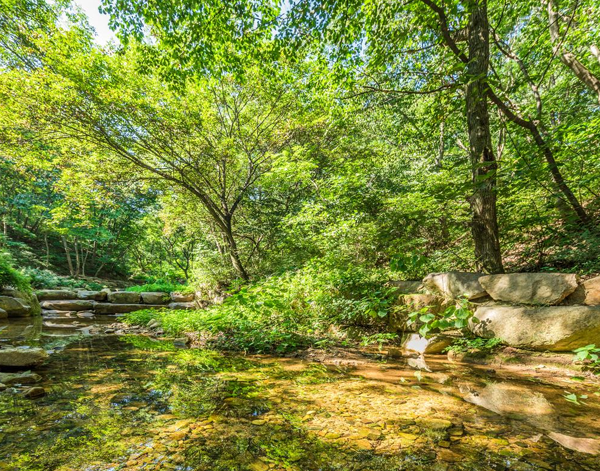
Sangdong Jangcheok Valley
- Address Sineosan Mountain in Mukbang-ri, Sangdong-myeon
- Phone 055-330-4921
- Period Open All Year Round
Jangcheok Valley is one of the two natural valleys representing Gimhae along with Jangyu Daecheong Valley and is located at the foot of Sineosan Mountain. It’s a valley naturally formed along the stream that comes down from Sineosan Mountain. The valley boasts splendid natural landscape and the water that flows from Dongbong Peak is deep and crystal clear. Even in the summer, the water is too cold to dip your feet in.
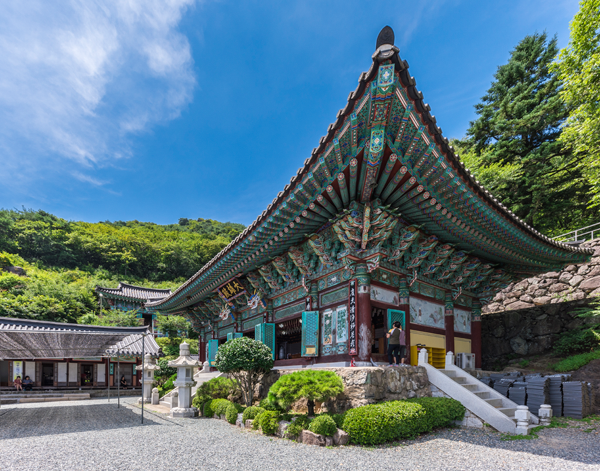
Jangyusa Temple
- Address 170-563, Daecheonggyegok-gil, Gimhae-si, Gyeongsangnam-do
- Phone 055-314-2799
- Period Open All Year Round
Jangyusa Temple is a malsa (branch temple) of Beomeosa, the 14th parish of the Jogye Order of Korean Buddhism and is a temple that provides evidence for the southern transmission theory (the theory that Buddhism was introduced to Korea from India) of Korean Buddhism. According to records at Jangyu Temple, the temple is said to have been originally established in year 48 by Prince and monk Jangyu Hwasang, who came to this region from Ayuta Kingdom of India, accompanying Queen Heo, who became the queen of King Kim Suro of Gaya. On the temple grounds, behind the Daewoongjeon (main hall), there remains the Sari Pagoda of Jangyu Hwasang who is believed to be the first person to introduce Buddhism to Korea.
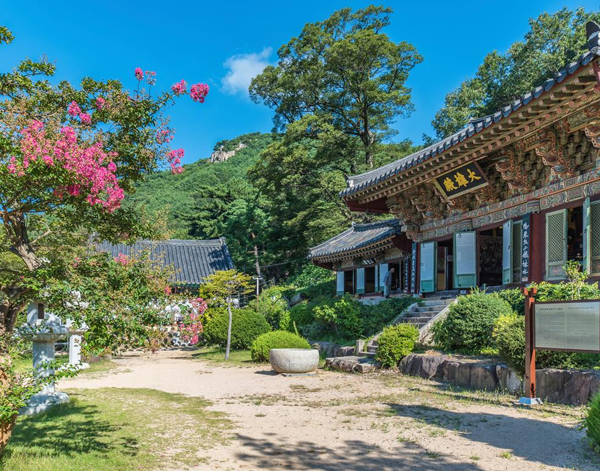
Eunhasa Temple
- Address 167, Sineosan-gil, Gimhae-si, Gyeongsangnam-do
- Phone 055-337-0101
- Period Open All Year Round
Located on the western slope of Sineosan Mountain, the temple is said to have been founded by Jang Yuhwa, the brother of Queen Heo Hwang-ok, during the reign of King Suro of Gayaguk. In those days, the temple was known as Seorimsa. It’s estimated that during the Japanese Invasion of Korea in 1592, all the temple buildings were destroyed by fire. Based on the remaining fragments and architectural techniques used, the temple is presumed to have been reconstructed in the later years of the Joseon Dynasty. The Daewoongjeon and Sumidan of Eunhasa are adorned with paired fish patterns which are presumed to be related to Queen Heo Hwang-ok.
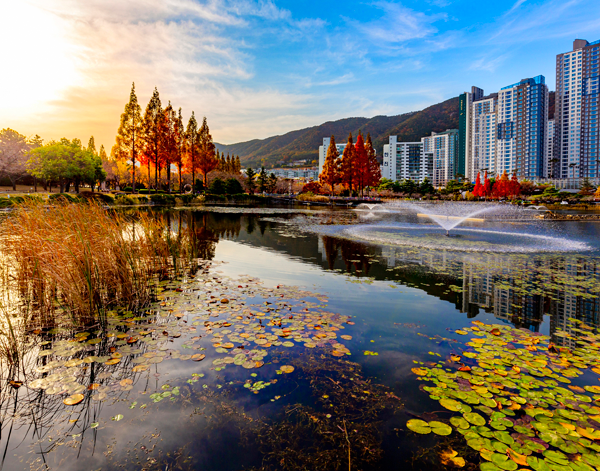
Yeonji Park
- Address 7, Geumgwan-daero 1368beon-gil, Gimhae-si, Gyeongsangnam-do
- Phone 055-330-4411
- Period Open All Year Round
This is an urban park located in Nae-dong, Gimhae and is a perfect place to take a break while exploring the surrounding historical sites. There are beautiful, refreshing fountains scattered around the lake and you can leisurely enjoy the reflection of the sky on the lake as you walk across the bridge over the lake. In the evening, a variety of fountains, each 50 meters in length and 30 meters in width, vibrant lights and music, create a spectacular view against the night sky.
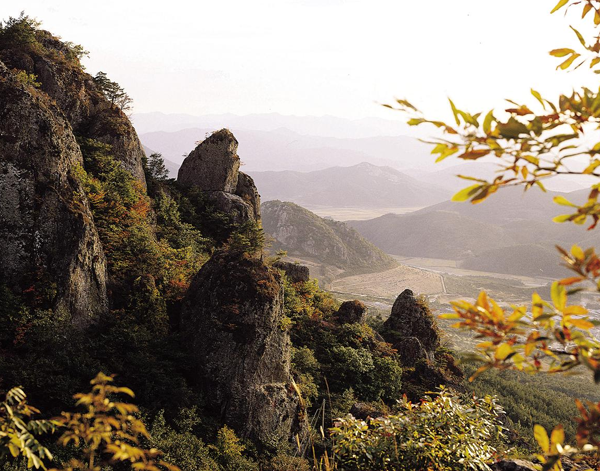
Mucheoksan Mountain
- Address Saengnim-myeon
- Phone 055-350-6391
- Period Open All Year Round
Gimhae's representative mountain, Mt. Mucheok, is a popular destination for many hikers due to its uniquely shaped rocks and beautiful scenery. Near the summit, there is a lake called "Cheonji," and according to legend, to sell the burial site for King Suro's tomb in Seosang-dong, a pond was made at the summit of Mt. Mucheok to prevent the water from flowing out of the tomb. Also, there are various attractions to enjoy, such as "Moeunam" built by King Geodeung, the eldest son of King Suro and the second king of Gaya, to honor his mother, Queen Heo, "Baegunam Temple" established to revitalize Buddhism in Gaya, the first "Shaking Rock" discovered in the southern region and the famous "Yeonliji" pine trees, known as the couple's pine.
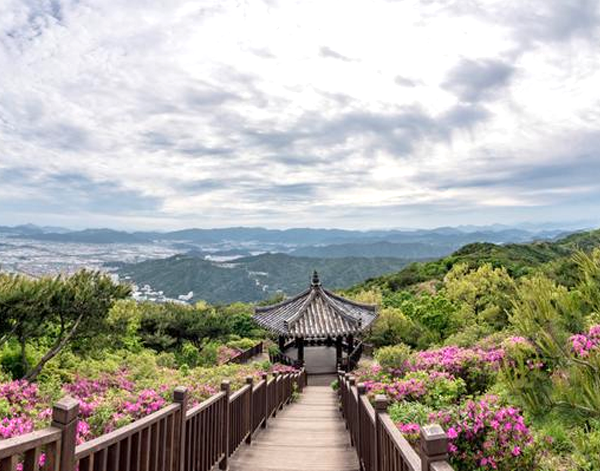
Sineosan Mountain
- Address Mukbang-ri, Sangdong-myeon, Gimhae
- Phone 055-350-6391
- Period Open All Year Round
630 m-high Mt. Sineo is a sacred mountain associated with the legends of King Suro and Queen Heo. To the northeast, Nakdong River winds its way, while to the south, the vast Gimhae plain unfolds. The name "Sineo" refers to the a pair of fish carved on the front of King Suro's tomb and they represent the nations of Ayodhya and Gaya.
Throughout the four seasons, Mt. Sineo offers breathtaking landscapes and rocky formations along the hiking trails, enhancing the allure of the hiking experience. Mt. Sineo boasts a harmony of dense forests, rock formations and Jangcheok Valley’s refreshing waterwall which create a picturesque scene.
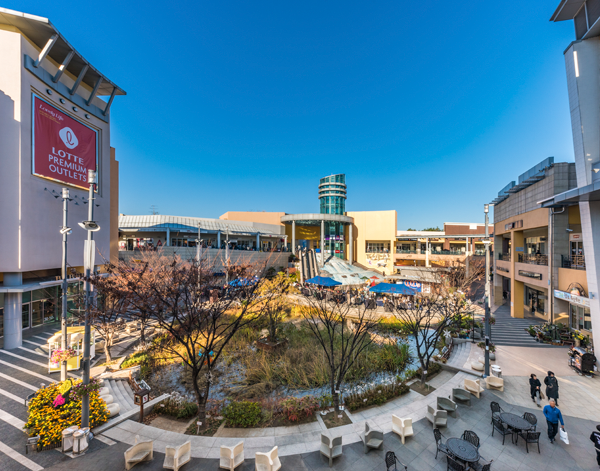
Lotte Premium Outlets – Gimhae
- Address 469, Jangyu-ro, Gimhae-si, Gyeongsangnam-do (Sinmun-dong)
- Phone 1899-8900
- Period Visit the Website
- Website https://www.lotteshopping.com/store/main?cstr=0331
Located at 469 Jangyu-ro in Gimhae City, the Lotte Premium Outlets Gimhae is a themed shopping space designed to provide both shopping and leisure experience in the suburbs. The exterior of the building features a modern design, and the complex is constructed with a spacious street-style layout to seamlessly blend with the surrounding natural landscape, presenting a distinct appearance from traditional outlets.
With its Charlotte Square that hosts various cultural performances and amenities such as a children's playground, this complex has become a popular shopping and tourism destination for families.
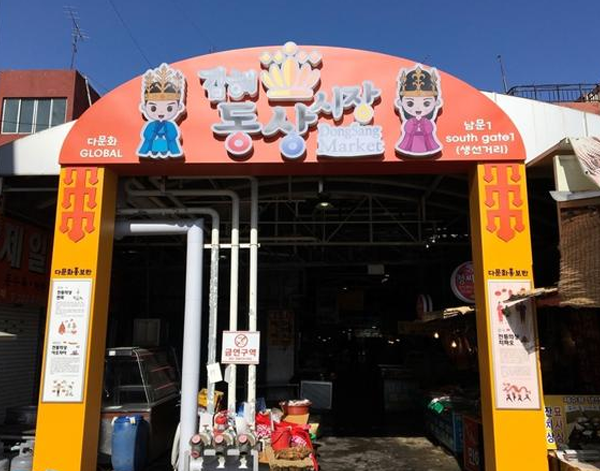
Dongsang Market
- Address 27-10, Guji-ro 180beon-gil, Gimhae-si, Gyeongsangnam-do
- Period Varies from Shop to Shop
Gimhae's representative traditional market that maintains a century-old tradition. Although there are claims that it has been formed since the Gaya Dynasty period, it gained the name Gimhae Dongsang Market in 1945, coinciding with the independence of Korea from Japan, and has been a bustling marketplace since then. The market is renowned for its traditional ceremonial foods, hand-cut noodles (sonkalguksu), fried foods, and pig's feet (jokbal). In addition to seafood and rice cakes, you can also find a variety of foreign vegetables and fruits in the market.

